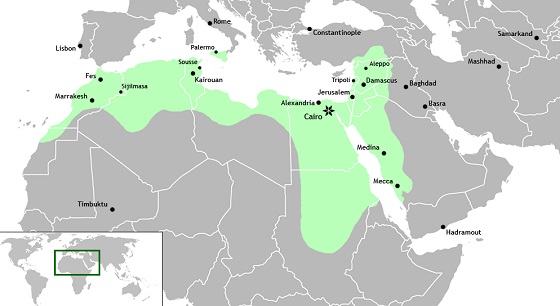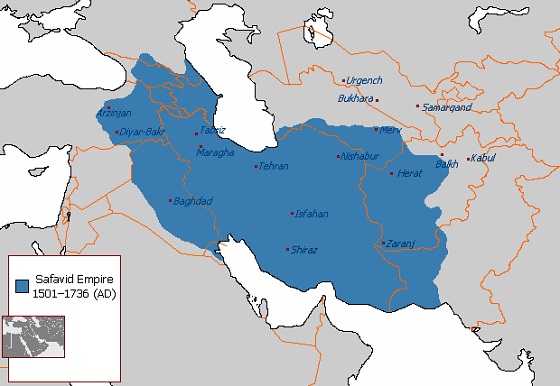
Was The Safavid Dynasty the First Shi'a one?
Posted On:In the name of Allah, the Merciful to all, the Compassionate
Nowadays, you would hear the word Safavid used extensively in arguments, because Syrian insurgents, ISIL, Al-Qaeda, Wahhabis, and many others attribute whatever they do not like to Safavids. The Safavid dynasty collapsed in 1722 AD, and many other dynasties came to power and fell since that time.
The Safavid policy was to draw a line between their territory and other neighbors like the Ottoman, so they adopted Shi'ism as the official faith. After the Safavids, Nader Shah, the great conqueror who was expanding his territory, espoused the Sunni faith to face less challenges in conquered Sunni-majority lands, and banned certain Shi'a practices which were particularly offensive to Sunnis.
I am not going to argue if these kings and emperors were really faithful and believed their faiths. As old saying goes: “Let bygones be bygones”. Whatever they did is now history. But one question remains unanswered for some, and that question is if Shi'a faith is a by-product of Safavids, fighting with Ottoman.
To provide an answer to this question, I have to explain how Shi'a & Sunni faiths are originated and what differentiates them. After Muhammad (PBUH), the messenger of Allah, passed away there were two major schools of thoughts:
- The majority of Muslims believed that the message from Allah, the Quran, is delivered, the prophet has nothing else to do, and Muslims can follow the message and decide how to manage their society by selecting a leader they choose. The very general term used for this school of though is Ahlus Sunnah wal Jamaah.
- But from the first day there were some people who believed the prophet appointed Ali (PBUH) as his successor, and the succession of a messenger is a matter to be declared by the messenger himself, not consensus of people.
At first everything was peaceful and Muslims could manage all the disagreements in a peaceful way. But over the time, when it became clearer how different the implications of these two opposite thoughts are, disagreements turned to conflicts, which finally culminated in massacre of Husayn ibn Ali and all of Muhammad’s (PBUH) descendants and family, just 51 years after Muhammad’s demise. This single incident was a turning point in history of Islam, and it finally caused the collapse of Umayyad Cliphate, and rise of Abbasid Caliphate who took advantage of being from the same tribe of Muhammad (PBUH).
The term Shi'a is a very broad one, and you can find hundreds of sects and beliefs under this umbrella term, and some of them hardly resemble anything remotely Islamic. Through the history there were various attempts to establish governments based on the school of thoughts of descendants of Muhammad (PBUH), and I listed some of them here:
Alavian Government, 864 to 929 AD
Alavians ruled coastal areas in north of Iran in that period and established their own government, which mostly led by Naser-Al-Hagh, ناصرالحق اطروش, who had a Zaidiyyah faith.
Idrisid Dynasty of Morocco, 788 to 974 AD
The Idrisids (Arabic: الأدارسة al-Idārisah, Berber: Idrisiyen) were a Zaydi-Shi’a dynasty of Morocco, ruling from 788 to 974. Named after the founder Idriss I, the great grandchild of Hasan ibn Ali, the Idrisids are traditionally regarded as the founders of the Moroccan state.
Fatimid Islamic Caliphate, 909 to 1171 AD
The Fatimid Caliphate (Arabic: الفاطميون, al-Fāṭimiyyūn) was a Shia Islamic caliphate, which spanned a large area of North Africa, from the Red Sea in the east to the Atlantic Ocean in the west. The dynasty ruled across the Mediterranean coast of Africa and ultimately made Egypt the centre of the caliphate. At its height, the caliphate included in addition to Egypt varying areas of the Maghreb, Sudan, Sicily, the Levant, and Hijaz.
In 969 they conquered Egypt and established Cairo as the capital of their caliphate, and Egypt became the political, cultural, and religious centre of the whole state. The ruling elite of the state belonged to the Ismaili branch of Shi'ism, as were the leaders of the dynasty.
At the end, the country was invaded by Ṣalāḥ ad-Dīn, whose first priority was to fight Shi’as rather than Christians ruling Jerusalem.
Buyid dynasty, 934 to 1062 AD
The Buyid dynasty or the Buyids (Persian: آل بویه Āl-e Buye), also known as Buwaihids, Bowayhids, Buyahids, or Buyyids, were a Shia dynasty which originated from Lahijan in Dailam, Iran.
Like most Daylamites at the time, the Buyids were Shia and have been called Twelver Shia.
Safavid Dynasty of Persia, 1501 to 1736 AD
The Safavid dynasty (Persian: سلسلهٔ صفويان), ruled from 1501 to 1722 (experiencing a brief restoration from 1729 to 1736). To rise against a much larger Ottoman empire, they had to create a unique identity. So they chose the name of Iran for their country, just to revive the memories of prehistoric rivalries between Iran and Turan, impersonated by the Ottoman in that era. Although Safavid had its origin in the Safaviyya Sufi order, it espoused the Twelver school of Shi'a as the official religion of their empire, just to evade any religious obligation to obey the Ottoman Caliphate.
Nowadays, contemporary nationalists of Iran, who dream about the pre-Islamic glory of Iranian Empire, are more thankful to Safavids than religious Shi’as.
Islamic Revolution of Iran, 1979 to Now
In Safavid era for most of the history, the consensus of Islamic scholars, or so called Ulama, was to stay out of governments, not sharing any responsibility or blame for whatever was done there. So they only offered their consultancy to the kings, and at most accepted some judiciary jobs. But the plans of Pahlavi dynasty to wipe out anything Islamic from Iran, convinced Imam Khomeini to cease this policy and ask Islamic scholars to enter the ring and try their best to establish an Islamic model of governance; or at least in worst case scenario, to control the damages done by Pahlavi.
How successful they are going to be, is a ten thousand billion dollar question.





